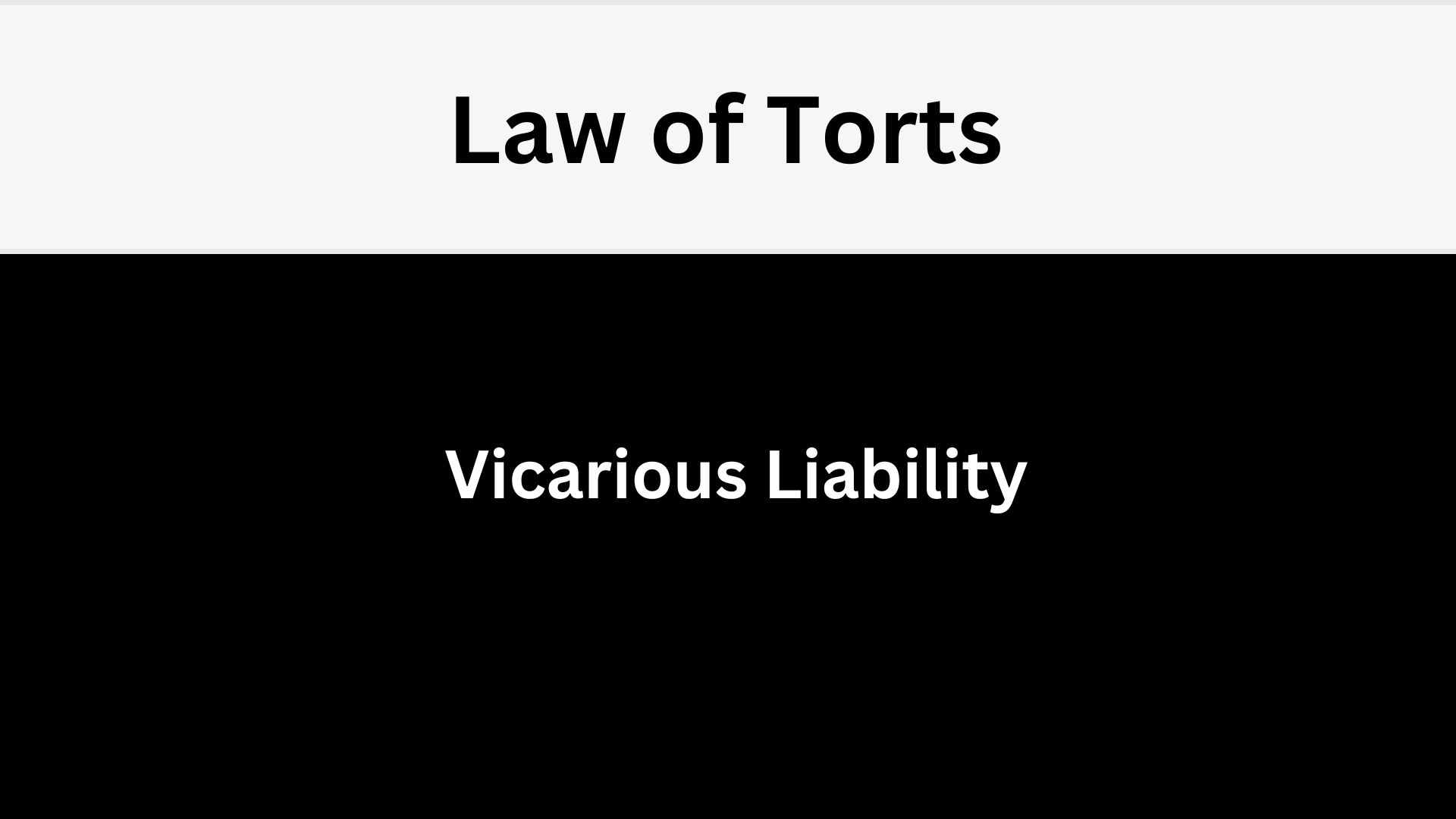Vicarious liability is a legal principle where one party is held liable for the tortious acts of another party. This typically arises in situations where there is a relationship between the parties, such as employer-employee, principal-agent, or partners in a partnership. The essence of vicarious liability is that the law imposes liability on one person for the wrongful actions of another due to their relationship.
Key Aspects of Vicarious Liability
- Employer-Employee Relationship
- Employers are vicariously liable for torts committed by their employees if the torts are committed within the course of employment. This means that the wrongful act must be connected to the work the employee was hired to do.
- Example: If a delivery driver negligently causes an accident while delivering goods, the employer can be held liable for the damages.
- Principal-Agent Relationship: Vicarious Liability in Law of Torts
- Principals can be held liable for the tortious acts of their agents if the acts are committed within the scope of the agency relationship.
- Example: If an agent defrauds a customer while performing their duties, the principal may be held liable for the fraud.
- Partnership : Vicarious Liability in Law of Torts
- Partners in a partnership are vicariously liable for torts committed by any partner acting in the ordinary course of the business of the partnership.
- Example: If a partner in a law firm commits professional negligence while handling a client’s case, all partners may be held liable.
- Parent-Child Relationship
- Parents are generally not vicariously liable for torts committed by their children. However, they may be held liable if they have failed to properly supervise their child or if the child was acting as an agent of the parent.
- Owner of Vehicle
- Owners of vehicles can be vicariously liable for the negligent driving of someone who is using the vehicle with the owner’s permission.
- Example: If a car owner lends their car to a friend who then causes an accident, the car owner may be held liable.
Conditions for Vicarious Liability
- Existence of Relationship
- There must be a recognized relationship (e.g., employer-employee, principal-agent, partnership) between the parties.
- Within the Scope of Employment or Authority : Vicarious Liability in Law of Torts
- The tortious act must be committed within the scope of the tortfeasor’s employment or authority. This means the act must be related to the duties the person was engaged to perform.
- Connection to the Relationship
- There must be a sufficient connection between the relationship and the wrongful act. The act should be related to the purpose of the relationship.
Defenses Against Vicarious Liability
- Independent Contractor
- Generally, employers are not vicariously liable for the acts of independent contractors. The key distinction is the degree of control the employer has over the work being done.
- Act Outside Scope of Employment
- If the employee or agent acts outside the scope of their employment or authority, the employer or principal may not be held liable. For example, if an employee commits a tortious act while engaging in personal activities not related to their job.
- Frolic and Detour
- If an employee goes on a “frolic” (a significant deviation from their work duties for personal reasons), the employer is not liable. A “detour” (a minor deviation) may still result in vicarious liability.
| Relationship | Example of Tortious Act | Condition for Liability |
|---|---|---|
| Employer-Employee | Delivery driver causes an accident | Act committed within the course of employment |
| Principal-Agent | Agent defrauds a customer | Act committed within the scope of agency |
| Partnership | Partner commits professional negligence | Act committed in the ordinary course of business |
| Parent-Child | Child damages property | Limited liability, usually for failure to supervise |
| Owner of Vehicle | Friend causes an accident while borrowing car | Act committed with the owner’s permission |

